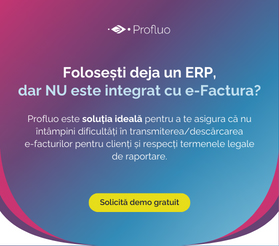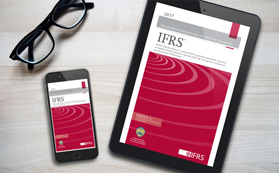
Government Decision no. 1.336/2023. The main changes to the methodological rules for the application of the Fiscal Code
Numărul 50-51, 20 dec. 2023 - 9 ian. 2024 » Finance & Economics
Government Decision no. 1.336/2023 for the modification and completion of the Methodological Norms for the application of Law no. 227/2015 regarding the Fiscal Code, approved by Government Decision no. 1/2016, was published in the Official Gazette, Part I no. 1196 of December 29th, 2023.
Below you will find the main changes to the methodological rules implementing the Tax Code:
I. Income tax
Clarifications have been made regarding the method of calculating the tax on income from the transfer of real estate properties from personal patrimony.
The main changes to the methodological rules for the application of the Fiscal Code
Thus, in the case of the transfer of the right of ownership or its dismemberment through inter vivo legal documents, the taxpayer is the one from whose patrimony the ownership right or its dismemberment is transferred: the seller, the creditor, the transferor in the case of the maintenance contract, of the deed of payment, of the transaction contract, with the exception of the transfer by donation, as well as the establishment or transmission of dismemberments of the property right free of charge.
In real estate exchange contracts, all exchangers and optionees are taxpayers, with the exception of the exchange of an immovable asset, real estate property, with a movable asset, in which case only the owner of the immovable asset is a taxpayer.
In the case of the transfer of ownership by donation, the capacity of taxpayer belongs to the grantee, if he is a taxpayer according to the provisions of Title IV "Income Tax" of the Fiscal Code.
In the case of the establishment or transmission of dismemberments of the property right free of charge, the capacity of taxpayer belongs to the acquirer of the dismemberments, in the event that he is a taxpayer according to the provisions of Title IV "Income Tax" of the Fiscal Code.
Taxable is also the natural person from whose patrimony the right of ownership or dismemberment thereof is transferred as a contribution to the share capital.
In the case of the transfer of a real estate owned in co-ownership, the tax is owed by each co-owner, corresponding to the ownership share. In the situation where ownership shares are not specified, it is assumed that each co-owner holds a share equal to that of the others.
In the case of the transfer of a real estate property owned in partnership, the tax is owed by each partnership co-owner in equal shares.
In the case of the transfer of a real estate property jointly owned, the tax is owed by each joint co-owner in equal shares.
If several real estate properties are transferred from the personal patrimony, through a single inter vivo legal act and regardless of the number of owners, the tax is due by each owner depending on the value of the share of each alienated real estate property.
In the case of one/some real estate properties transferred as a contribution to the share capital, the value at which the tax is determined is the value provided for in the act by which the real estate was brought as a contribution in kind to the share capital, the appraisal report or the market study, as appropriate, as follows:
a) in the situation where the relevant legislation requires the drawing up of an appraisal report, the value from the transfer deed, but not less than the value resulting from the appraisal report;
b) in the situation where the relevant legislation does not require the drawing up of an appraisal report, the value from the transfer deed or the value established by the market study, if the declared value is lower than the minimum value established by the market study carried out by the chambers of notaries public with expert appraisers authorized under the law.
II. Value added tax
Regarding the reduced rate of VAT (9%) for food
The reduced tax rate of 9% provided for in art. 291 para. (2) letter e) of the Fiscal Code applies to the entire economic chain from production to the sale to the final consumer by all suppliers, regardless of their quality, respectively manufacturers or traders, for the delivery of goods that fall under the following NC codes, regardless of their destination, with the exception of foods with added sugar whose total sugar content is at least 10 g/100 g of product, other than milk powder for newborns, infants and young children, cakes and biscuits:
For the foods provided for in art. 291 para. (2) letter e) point 3 of the Fiscal Code, based on the list of ingredients it is determined whether they have added sugar, no matter in what quantity, and the total sugar content is the one provided in the nutritional information.
If for the products provided for in art. 291 para. (2) letter e) point 3 of the Fiscal Code, the total sugar content is expressed in grams/unit of measure for volume, taxable persons must make the transformation from the unit of measure for volume to the unit of measure for mass.
The reduced VAT rate of 9% applies to the intra-Community delivery, import or purchase of notified food supplements that can be found on the website of the Ministry of Health or that of the National Institute for Research and Development for Food Bioresources, in accordance with the Order of the Minister of Agriculture, Forestry and rural development, of the minister of health and of the president of the National Veterinary Sanitary and Food Safety Authority no. 1.228/2005/244/63/2006 for the
approval of the Technical Norms regarding the marketing of pre-dosed food supplements of animal and vegetable origin and/or their mixtures with vitamins, minerals and other nutrients, with the Order of the Minister of Agriculture, Forestry and Rural Development and of the Minister of Health no. 244/401/2005 regarding the processing and marketing of medicinal and aromatic plants used as such, partially processed or processed in the form of pre-dosed food supplements and with the Order of the Minister of Public Health no. 1.069/2007 for the approval of the Norms regarding food supplements.
The reduced VAT rate of 9% does not apply to the delivery, import or intra-Community purchase of food supplements that fall within the exceptions provided for in art. 291 para. (2) letter e) from the Fiscal Code.
Regarding the reduced rate (9%) for accommodation in the hotel sector or sectors with a similar function, including the rental of plots arranged for camping
The reduced tax rate of 9% provided for in art. 291 para. (2) letter j) of the Fiscal Code applies to types of accommodation in tourist reception structures with an accommodation function. In the case of accommodation with breakfast, half board, full board or "all inclusive", the reduced rate of VAT is applied to the total price of the accommodation, which may also include alcoholic beverages, non-alcoholic beverages that fall under NC code 2202, as well as foods with added sugar, whose total sugar content is at least 10 g/100 g product.
Regarding the reduced rate of VAT (9%) for restaurant and catering services
In application of art. 291 para. (2) letter k) from the Fiscal Code, restaurant and catering services mean the services provided for in point 18. Any combination of alcoholic and non-alcoholic beverages, regardless of the alcohol concentration, is considered an alcoholic beverage. For alcoholic beverages, as well as for non-alcoholic beverages that fall under NC code 2202, served in a restaurant or offered in the case of catering services, the standard VAT rate is applied, without considering that there is a separate delivery of goods, the offering of drinks being part of restaurant or catering services.
Regarding the reduced rate of VAT (9%) for the delivery of houses
The reduced tax rate of 9% provided for in art. 291 para. (2) letter m) of the Fiscal Code applies only to delivery, as defined in art. 270 para. (1) of the Fiscal Code, of housing as part of the social policy, respectively for the transfer of the right to dispose as an owner of the assets provided for in art. 291 para. (2) letter m) from the Fiscal Code.
In application of art. 291 para. (2) letter m) point 3 of the Fiscal Code:
a) household annexes are not considered in the calculation of the usable area of the 120 sqm dwelling;
b) the limit value of 600,000 lei includes the value of the house, including the value of the undivided shares from the common parts of the building and the household annexes and, as the case may be, the land on which the house is built, but excludes some servitude rights related to the said house.
The usable area of the house provided for in art. 291 para. (2) letter m) point 3 of the Fiscal Code must be entered in the cadastral documentation attached to the inter vivo legal act between the parties whose object is the transfer of the ownership right, concluded under the law.
Taxable persons who deliver homes will apply the rate of 9%, including for the advances related to these deliveries, if it follows from the concluded contracts that at the time of delivery all the conditions imposed by art. 291 para. (2) letter m) from the Fiscal Code are fulfilled. In the situation where the advances were invoiced by applying
the standard VAT rate, upon delivery of the immovable property, the regularizations provided for in art. 291 para. (6) of the Fiscal Code in order to apply the 9% rate, if all the conditions imposed by art. 291 para. (2) letter m) of the Fiscal Code, as detailed in the present methodological rules, are fulfilled on the date of delivery.
For the buildings provided for in art. 291 para. (2) letter m) points 1, 2 and 4 of the Fiscal Code, the buyer will provide the seller with a declaration on his own responsibility, authenticated by a notary, from which it can be seen that he will use these buildings according to the destination provided by law, which is kept by the seller to justify the application of the reduced VAT rate of 9%. The declaration must be presented at the latest by the time of delivery of the respective building. The provisions of art. 291 para. (2) letter m) points 1, 2 and 4 of the Fiscal Code also apply in the case of the delivery of parts of a building intended for the respective purposes.
Special provisions regarding VAT
In the situation where a package that includes goods/services subject to both the reduced VAT rate and the standard VAT rate is sold and a main operation can be established, the VAT rate applicable to the package is the VAT rate applicable to the main operation, even if the price of each element that makes up the total price paid by a consumer to be able to benefit from this benefit can be identified, as the European Court of Justice ruled in Case C-463/16 Stadion Amsterdam CV.
Example: A taxable person registered for VAT purposes offers the possibility of purchasing a package of goods and services consisting of access to a sports event and facilities within the sports event, such as: catering/restaurant services, food products, parking access. In this situation, even if the price of each element that makes up the total price paid by a consumer to be able to benefit from this could be identified, the VAT rate applicable to the package is 9%, respectively the VAT rate related to access to the sports event that represents the main performance.
In the case of suspending the execution of the decision to cancel the registration for VAT purposes, ordered by the courts based on the provisions of the Administrative Litigation Law no. 554/2004, with subsequent amendments and additions, all effects of the decision to cancel registration for VAT purposes are suspended until its termination. During the suspension period, the tax authority registers the taxable person for VAT purposes.
III. Excise duties and other special taxes
- the definition of non-alcoholic beverages in the sense of art. 439 para. (2) letters d) and e) of the Fiscal Code.
- clarifications in the sense that drinks for which the consumer decides the amount of sugar added to their content, products that cannot be consumed as such as drinks, as well as drinks prepared on the spot for which the amount of sugar cannot be determined at the time of sale are not considered non-alcoholic drinks with added sugar.
- the introduction of a contravention in case economic operators who produce, purchase from other EU member states or import non-alcoholic beverages with added sugar for which the total sugar level is between 5g – 8 g/100 ml and non-alcoholic beverages with added sugar for which the total sugar level is over 8 g/100 ml, do not comply with the notification obligation.
(Copyright foto: 123RF Stock Photo)
















O istorie a banilor românești, reconstituită „vizual” într-un celebru muzeu
Actuala „ofensivă” a cărții înregistrează noi victorii pe „frontul” lecturilor de calitate
Susținere financiară suplimentară pentru protejarea „Tezaurului Uman Viu”
ArtSafari: cinci expoziții de excepție cu opere ale marilor artiști plastici români
Istoria Teatrului, o „scenă” pentru eternitate
Cartea pentru copii, de la „Cenușăreasă” la podiumul premianților
Monumentele istorice, comori pentru eternitate
La MNAR, filmul de artă este la el acasă